The right upgrade for every application
NanoOne printing systems are always offered in a ready-to-use standard configuration but can also be customized with additional modules to meet specific customer requirements. These modules can also be retrofitted at any later time.
Bio module
high-resolution bioprinting
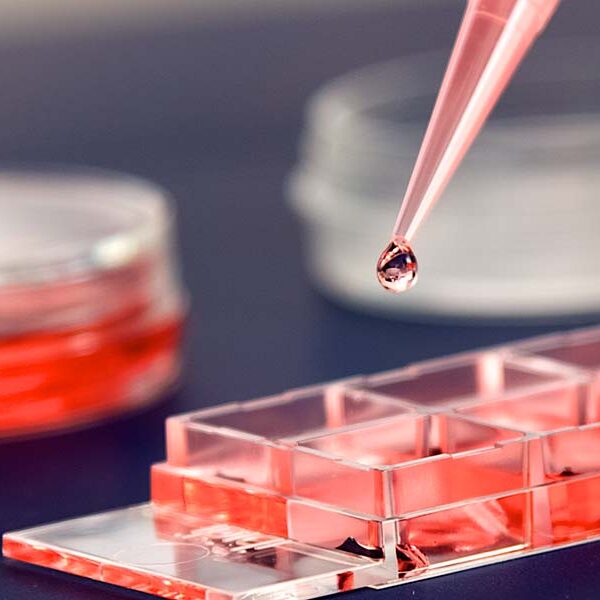
Biocompatible 3D printing in the presence of living cells
Our printing process and biocompatible materials are designed with biofabrication in mind. Living cells can be mixed into the resin and printed directly or seeded on prefabricated structures.
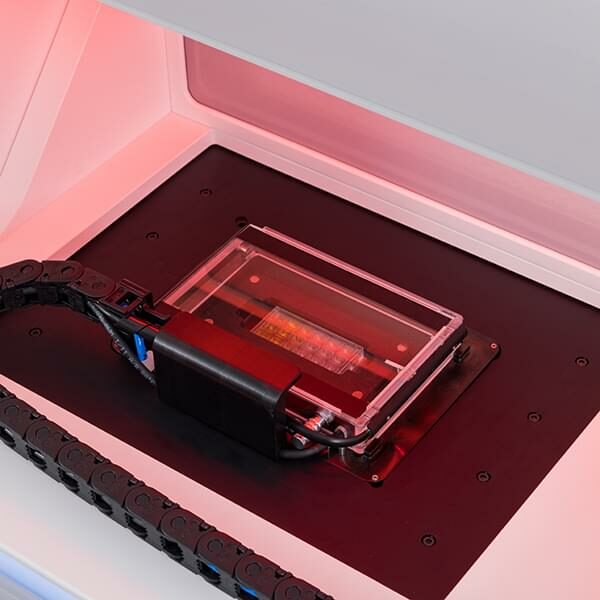
Stage top incubation system
The incubation system with its specifically designed insert can be simply clicked into the building platform. Necessary tubings and cables can be accessed by an interchangeable opening in the door. The incubation system’s temperature control unit makes it possible to adjust humidity and CO2 content to meet the requirements of the cell type used, ensuring a native environment during the print process and thus cell viability.
UpBio: gelatine-based hydrogel material for biocompatible applications and bioprinting
Substrates: Interchangeable stage inserts allow the use of a variety of different substrates.
8-well chamber
96-well plate
Petri dish
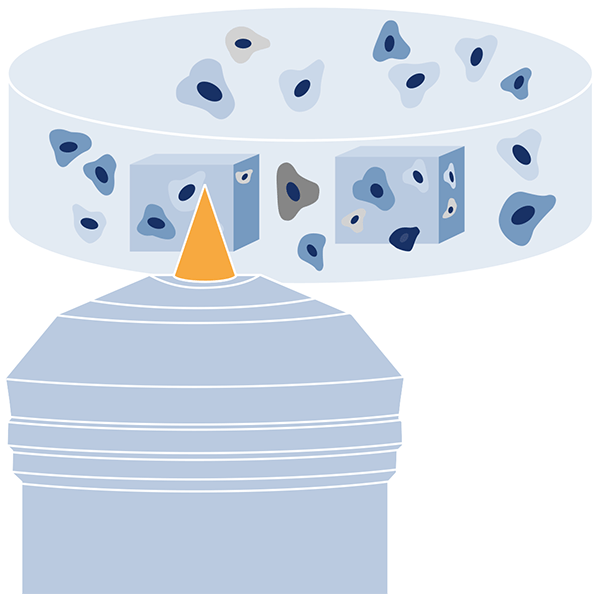
High-resolution bioprinting
The NanoOne printing system enables direct printing of living cells
Cells embedded in an UpBio matrix can be used for three-dimensional in-vitro cell tests, which have become increasingly important in cell culture, tissue regeneration and pharmaceutical research. There is hardly any restriction in the choice of substrate. Cell culture plates, Petri dishes or microfluidic chips with glass bottoms can be inserted into the machine with the help of the universal holder. In combination with the stage top incubation system, native temperature, humidity and CO2 conditions are controlled during the printing process, ensuring call viability.
Biocompatible structures
Fabrication of structures and surface textures mimicking the microenvironment of cells
UpNano’s materials allow the fabrication of structures and surface textures mimicking the microenvironment of cells. These three-dimensional culture approaches, and especially the results obtained from them, are becoming increasingly important in preclinical research and will be groundbreaking for future therapeutic strategies.
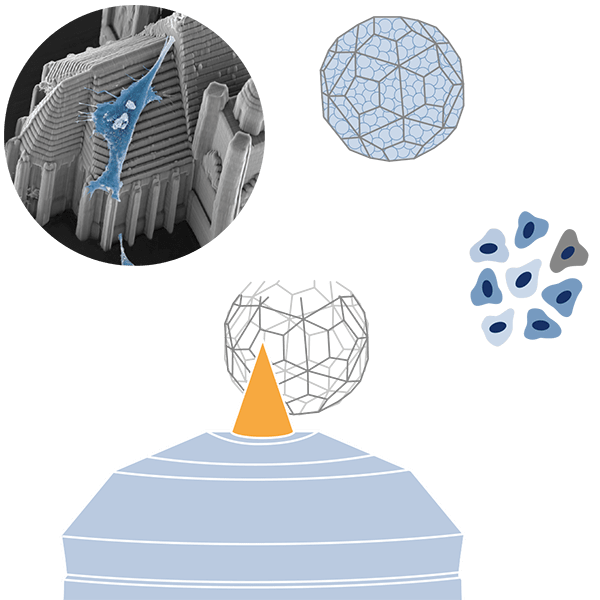
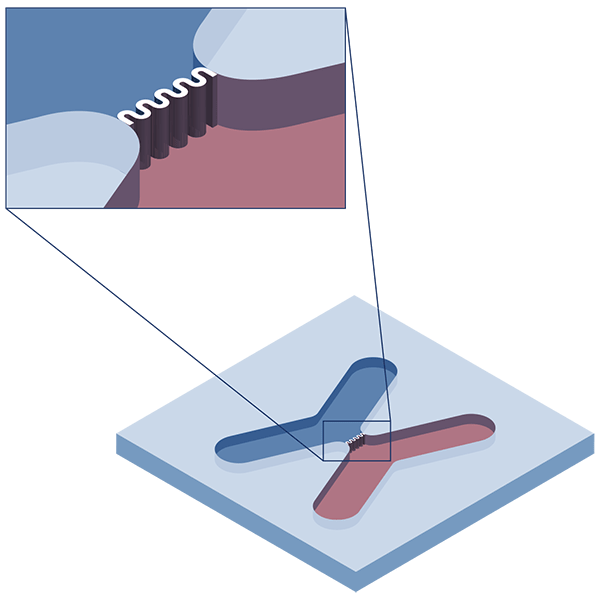
Microfluidic applications
Fabrication of high-resolution structures directly within a microfluidic chip
Internal elements such as separators, channels or membranes can be fabricated directly within a commercially available or custom-made microfluidic chip. The printing process takes place under sterile conditions. The material is prepared and injected under the laminar hood and the sealed chip can then be placed in the printing system and postprocessed in a sterile environment.
High volume module:
high-speed 2PP printing
The NanoOne printing system once and for all puts an end to the thinking that "2PP printing is meant to be slow". The innovative and patented printing process makes it possible not only to produce microcomponents with the usual high resolution and structural details in the range of 170 nm, but also to take the step towards batch and series production.
Within one print job, the NanoOne system can print a series of components that are either identical or differ in design and/or printing parameters. With just a few clicks, the desired parameters can be assigned to the components. Alternatively, the predefined and proven print profiles can be used.
The enormous performance of the system also makes it possible for the first time to produce components in the centimeter range. With a possible component height of up to 42 mm, the NanoOne system closes the gap between conventional 2PP printing systems and microstereolithography. And it does so with extraordinary speed.
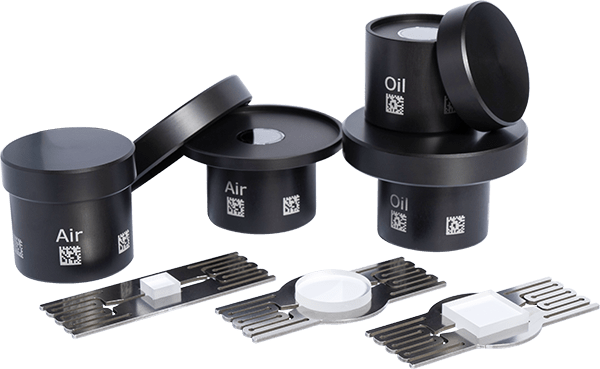
Great ideas need to have room
No matter whether large-volume components with an edge length in the centimeter range or the first small series. The high volume package enables the implementation of project ideas that previously seemed impossible.
Larger material vats and suitable substrates with an edge length of 20x20 mm or wafers with a 1" diameter offer the greatest possible design freedom and take the first step towards industrial implementation. With this setup, for the first time ever, series production of 2PP manufactured microcomponents is possible while at the same time user interaction is reduced to a minimum.
The powerful laser that can be built into the NanoOne system allows the use of low magnification objectives and thus the production of unexpectedly large structures with structure details of less than 2 microns. The solution for components in the sweet spot between classic 2PP and microstereolithography applications.
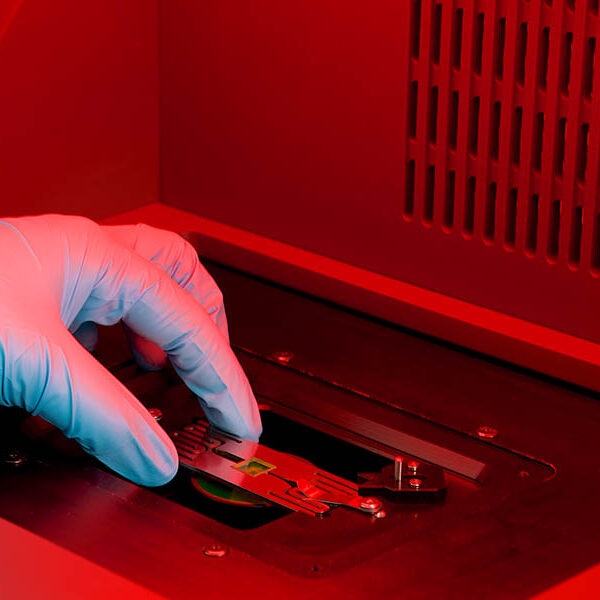
Clean even without a clean room
In the production of micro and nanoscale, a clean working environment with a low level of particles is an absolute must. That's why the NanoOne printing systems are equipped with an H14 HEPA filter by default.
When loading and unloading the NanoOne system, clean room class ISO7 can be maintained. In the closed state, during the printing process, no particles >0.3 micrometers are detectable. This means that low-contamination loading and unloading and contamination-free printing is possible even without a clean room.
ISO tensile test specimens: batch of 35 specimens printed in 13 h 56 min 23 s
Cell scaffolds: 18x18 array of scaffolds with a diameter of 1 mm printed in 8 h 19 min 46 s
Batch production
Prototyping and small series production
Functional micropart: 196 springs with a height of 11 mm printed in 33 h 26 min 09 s

